How to Grow English Ivy: Complete Care and Growing Tips
- March 7, 2024
- 0 comment
English Ivy (Hedera helix), with its timeless elegance, is a popular evergreen vine known for its versatile beauty and adaptability. Whether gracing the walls of buildings or enhancing indoor spaces, English Ivy adds a touch of nature’s allure wherever it grows. This guide will walk you through the essentials of cultivating healthy and vibrant English Ivy.
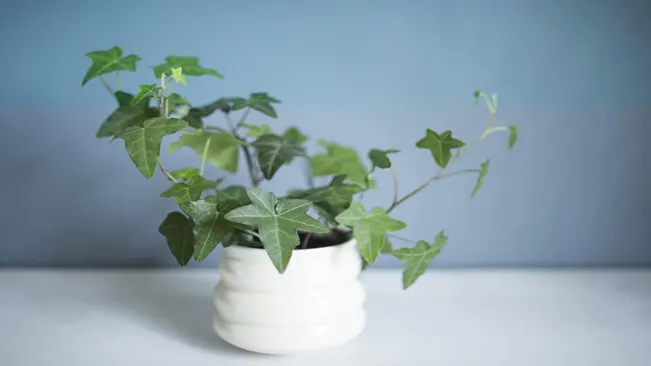
List on How To Grow English Ivy
- Choosing Your Plant
- Planting and Location
- Watering and Humidity
- Feeding
- Pruning and Maintenance
- Pest and Disease Management
- Propagation
- Safety Considerations
Choosing Your Plant
When selecting English Ivy, consider the variety that best suits your needs. Variegated types add a pop of color, while solid green varieties offer a classic look. Ensure the plant is healthy, free of pests, and shows no signs of damage or disease.
Varieties of English Ivy
English Ivy comes in numerous varieties, each with its unique charm. The two broad categories are variegated and non-variegated types.
Variegated Varieties
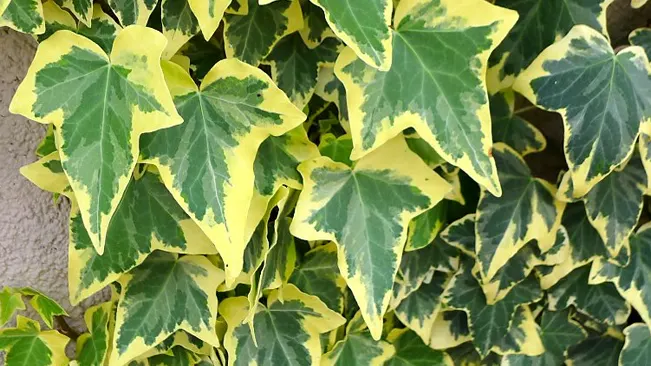
- These types have leaves with multiple colors, usually a mix of green with white, cream, or yellow. Variegated ivies are excellent for adding visual interest and contrast. Some popular variegated varieties include ‘Goldchild’, with its gold and green leaves, and ‘Glacier’, known for its grey, white, and green foliage.
Solid Green Varieties
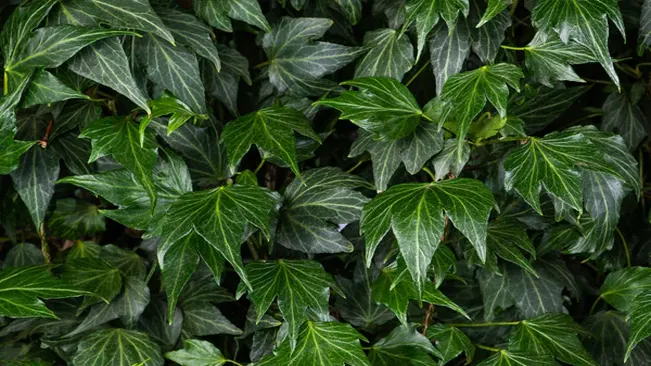
- These are the classic English Ivy types, showcasing lush green leaves. They are ideal for creating a more traditional or seamless green backdrop. ‘Green Ripple’ and ‘California’ are common choices, known for their deep green, glossy leaves.
Choosing a Healthy Plant
When you’re picking out an English Ivy, whether from a nursery or garden center, pay close attention to the following aspects:
- Leaf Health: Look for vibrant, unblemished leaves. Yellowing, spotted, or wilted leaves can be signs of stress, poor health, or disease.
- Pest Inspection: Check the undersides of the leaves and the stem for signs of pests like spider mites, aphids, or scale insects. Healthy plants should be free from these.
- Root Check: If possible, gently check the roots. They should be firm and white or light tan, not mushy or blackened, which could indicate root rot.
- Foliage Density: A plant with dense, lush foliage is typically healthier. Sparse or leggy growth can be a sign of insufficient light or other care issues.
Planting and Location
Outdoor Planting

- Soil Requirements: English Ivy prefers well-drained soil that is rich in organic matter. Before planting, it’s beneficial to amend the soil with organic compost to improve its structure and nutrient content. Good drainage is crucial to prevent waterlogging, which can lead to root rot.
- Location: Choose a location that offers partial to full shade. Although English Ivy is quite adaptable, it doesn’t fare well in areas that receive intense, direct sunlight for prolonged periods, as this can lead to leaf scorch. It’s perfect for north or east-facing walls or under tree canopies where it receives filtered sunlight.
- Spacing and Planting Depth: When planting English Ivy outdoors, consider the mature size of the plant. Space plants about 12 to 18 inches apart to allow room for growth. Plant them at the same depth as they were in their nursery pot to avoid burying the stem too deep.
- Climbing Support: If you want your English Ivy to climb walls or structures, ensure that the surface is suitable. While Ivy can cling to many surfaces, it may cause damage to wood siding or weak masonry. Providing a trellis or wire framework can be a good alternative.
Indoor Planting
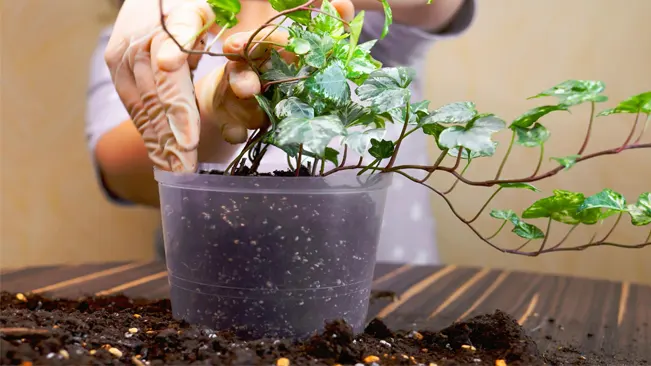
- Potting: Use a container with adequate drainage holes to prevent excess water from accumulating at the bottom. The pot size should accommodate the plant’s root system with some extra space for growth, but it shouldn’t be excessively large as this can lead to water retention in the soil.
- Potting Soil: High-quality potting soil that ensures good drainage and aeration is ideal for English Ivy. You can use a standard potting mix or one formulated for houseplants. Some gardeners mix in perlite or vermiculite to improve drainage.
- Light Requirements: Indoors, English Ivy needs bright but indirect light. Too little light can make the plant leggy and affect its leaf color, while too much direct sunlight can scorch the leaves. A spot near a north or east-facing window often works well.
- Rotating the Plant: To ensure even growth, rotate your Ivy pot periodically. This practice helps the plant receive light uniformly on all sides, promoting balanced growth and preventing it from leaning towards the light source.
- Humidity and Temperature: English Ivy prefers a cool environment with moderate humidity. You can increase humidity around the plant by placing a humidity tray with water and pebbles underneath the pot, or by misting the leaves regularly. Avoid placing it near heat sources or in dry, overly warm rooms.
Watering and Humidity
Watering Needs

- Frequency: Regular watering is crucial, especially during the first growing season to establish a deep, extensive root system. Once established, English Ivy is quite drought-tolerant, but it still prefers consistent moisture.
- Amount: The amount of water required can vary depending on soil type and climate. Sandy soils typically require more frequent watering than clay soils. During hot, dry periods, more frequent watering may be necessary.
- Winter Care: In winter, you should reduce the frequency of watering as the plant’s growth slows down and the cooler temperatures reduce evaporation from the soil.
Soil Moisture Management
- It’s important to ensure that the soil drains well to prevent root rot. Overly soggy soil is detrimental to English Ivy.
- A layer of mulch can help retain soil moisture and regulate soil temperature, benefiting the plant’s root system.
Watering and Humidity for Indoor English Ivy
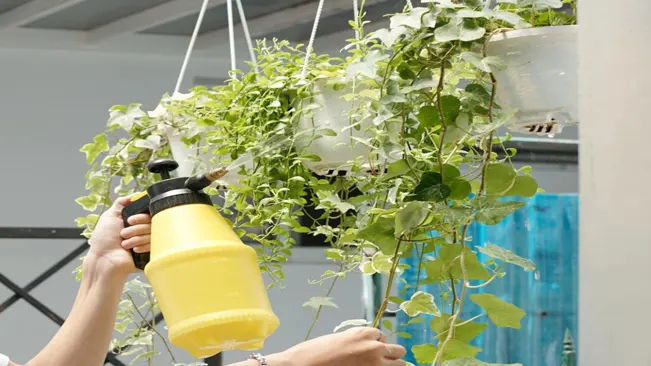
Watering Indoors
- Consistency: Indoor Ivy requires evenly moist soil. Check the soil moisture every few days and water when the top inch of soil feels dry to the touch.
- Avoiding Overwatering: Be cautious of overwatering, as this is a common mistake with indoor plants. Overwatering can lead to root rot, which is particularly harmful in indoor environments where drainage and air circulation are less efficient than outdoors.
Managing Humidity
- Humidity Requirements: English Ivy prefers a more humid environment than what is typically found in indoor settings, especially in winter when indoor heating can dry out the air.
- Increasing Humidity: You can increase humidity around your English Ivy in several ways:
- Misting: Regularly misting the leaves can help, but ensure the leaves don’t stay wet for extended periods, as this can encourage fungal diseases.
- Humidifier: Using a room humidifier is an effective way to maintain a consistent humidity level.
- Tray with Water and Pebbles: Placing the pot on a tray filled with pebbles and water can also help increase the surrounding humidity. Ensure the pot is not sitting directly in water.
Feeding
Fertilize your English Ivy once in the spring and once in the summer with a balanced, liquid fertilizer. Over-fertilizing can harm the plant, so follow the instructions carefully.
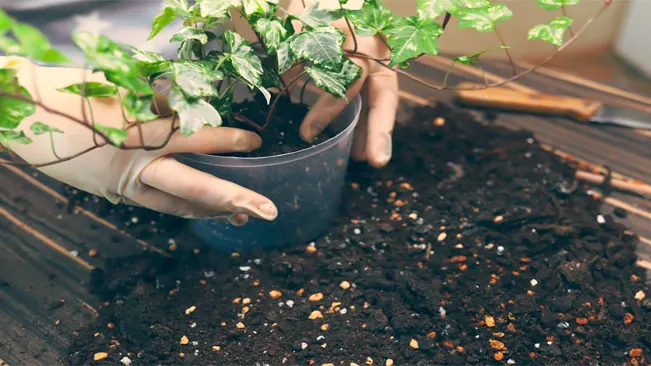
- Why Fertilize: English Ivy, like most plants, needs nutrients to grow healthily. In their natural habitat, they obtain these nutrients from the soil. However, in a garden or home setting, the nutrients in the soil can become depleted over time, especially if the plant is in a container. Fertilizing helps replenish these essential nutrients, promoting lush, vigorous growth and vibrant foliage.
- Choosing the Right Fertilizer: A balanced, liquid fertilizer is ideal for English Ivy. “Balanced” means that the fertilizer has equal or nearly equal proportions of Nitrogen (N), Phosphorus (P), and Potassium (K), often labeled as NPK 10-10-10 or 20-20-20. These three elements are crucial for the overall health of the plant – Nitrogen promotes leaf growth, Phosphorus is good for roots and blooms, and Potassium overall helps with the plant’s functions.
- Frequency of Feeding: The recommended frequency is twice a year – once in spring and once in summer. These are the growing seasons for English Ivy when the plant is actively developing new leaves and stems. Fertilizing during these periods supports this growth.
- Avoiding Over-Fertilization: Over-fertilization can be detrimental. It may lead to a buildup of mineral salts in the soil, which can burn the plant’s roots and even hinder its growth. Signs of over-fertilization include brown or dried leaf edges, wilting, and slow growth.
- Application Method: When applying liquid fertilizer, follow the instructions on the product label. Usually, it involves diluting the fertilizer with water. Water the soil around the ivy thoroughly, not just the leaves, to ensure the roots can absorb the nutrients.
- Considerations for Indoor and Outdoor Ivy: For outdoor ivy, natural elements like rain can sometimes wash away nutrients, necessitating fertilization. Indoor ivy in pots often requires more frequent fertilization than outdoor ivy, as nutrients in potting soil can deplete faster.
- Seasonal Adjustments: Reduce or stop fertilizing in the fall and winter when the plant’s growth naturally slows down. Continuing to fertilize during these dormant periods can do more harm than good.
- Soil Quality: Regularly check the quality of the soil, especially for potted plants. Over time, soil can become compacted or exhausted of nutrients, in which case it might be beneficial to repot the plant in fresh, nutrient-rich soil.
- Organic Alternatives: If you prefer organic gardening, you can opt for organic fertilizers. These are made from natural sources and are released into the soil more slowly, reducing the risk of over-fertilization.
Pruning and Maintenance
Prune regularly to promote bushier growth and maintain the desired shape. Pruning is also important for controlling its spread, as English Ivy can become invasive.
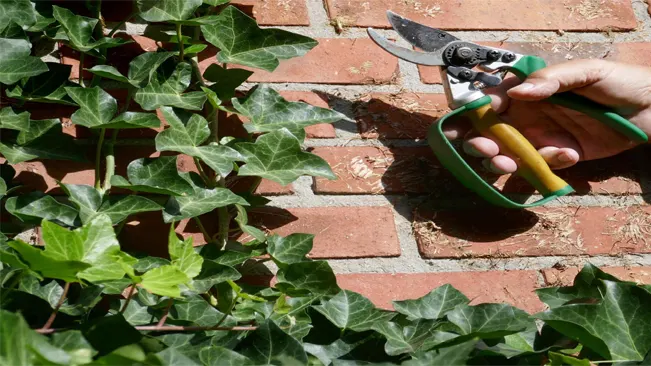
Pruning English Ivy for Health and Shape
- Timing: The best time to prune English Ivy is in late winter or early spring before new growth starts. This timing allows the plant to recover quickly and put out new growth in spring and summer.
- Tools: Use sharp, clean pruning shears or scissors. Sterilize your tools before use to prevent the spread of disease.
- Promoting Bushier Growth: To encourage a bushier growth habit, trim the ends of the vines. This will stimulate the plant to produce new growth from the sides of the stems. Regular trimming can make your ivy look fuller and more compact.
- Shaping: If you are growing English Ivy as a trailing houseplant or ground cover, you might want to shape it for aesthetic purposes. Trim it to maintain the desired size and shape, being careful not to remove more than a third of the plant at one time.
- Controlling Spread: English Ivy can be invasive, particularly when grown outdoors. Regular pruning is necessary to control its spread and prevent it from overtaking other plants or structures. Cut back any vines that are extending beyond the desired area.
Maintenance Tips
- Check for Pests: While pruning, inspect for signs of pests like spider mites, aphids, and mealybugs. Early detection and treatment can prevent larger infestations.
- Cleaning the Leaves: For indoor ivy, periodically wipe the leaves with a damp cloth to remove dust. This not only keeps the plant looking fresh but also improves its ability to photosynthesize effectively.
- Providing Support: If your English Ivy is climbing, ensure it has appropriate support. Use trellises, wall ties, or other structures to guide its growth in the desired direction.
- Avoiding Damage: When growing on walls or structures, be cautious. English Ivy can cause damage, especially to older or weakened structures. Regular maintenance can prevent the roots from causing harm.
- Rejuvenation Pruning: If your ivy has become overgrown or leggy, consider rejuvenation pruning. This involves cutting back the plant almost to the base to encourage new, vigorous growth. This is a more drastic measure and should be done only when necessary and with caution.
Pest and Disease Management
Keep an eye out for pests like spider mites, aphids, and mealybugs. Treat infestations promptly with insecticidal soap or neem oil. Prevent fungal diseases by ensuring good air circulation and avoiding overhead watering.
Pest Management
- Identifying Pests:
- Spider Mites: These are tiny spiders, often red or brown, visible as small dots on the underside of leaves. They can cause yellowing or speckling of leaves.
- Aphids: Small, green or black insects, often found in clusters on new growth or the underside of leaves. They can cause leaves to curl or distort.
- Mealybugs: Look for white, cottony masses on leaves and stem joints. They sap the plant’s strength by sucking its juices.
- Treating Infestations:
- Insecticidal Soap: This is a safe and effective treatment for most pests. It works by breaking down the insects’ outer coating, causing them to dehydrate.
- Neem Oil: An organic option that acts as a repellent, antifeedant, and egg-laying deterrent for pests. It’s effective against various stages of insect life cycles.
- Preventive Measures:
- Regularly check the plant for early signs of pests.
- Keep the leaves clean. Dust can attract pests, so gently wipe leaves with a damp cloth or give your ivy a shower occasionally.
- Ensure good air circulation around the plant. Overcrowding can increase humidity levels, which pests love.
Disease Management
- Common Diseases:
- Fungal Diseases: Such as leaf spot or root rot. These are often due to excessive moisture and poor air circulation.
- Preventing Diseases:
- Watering Practices: Avoid overhead watering which leaves foliage wet for extended periods. Water at the base of the plant, and allow the topsoil to dry out between waterings.
- Air Circulation: Ensure the plant is not crowded and has enough room for air to circulate freely around its leaves.
- Treatment:
- If you notice signs of fungal disease (like black or brown spots on leaves), remove affected leaves and isolate the plant if it’s indoors.
- Use fungicides if necessary, but in many cases, adjusting the care routine (such as improving air circulation and adjusting watering) can resolve minor issues.
Propagation
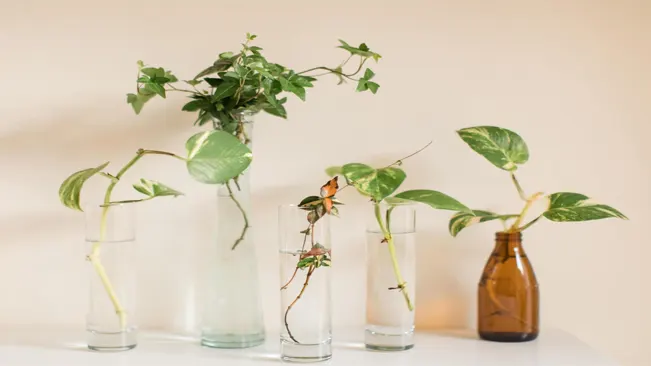
Selecting the Cutting
- Choosing the Right Stem: Look for a healthy, vigorous stem on your English Ivy plant. It should have several leaves and be free from any signs of pests or diseases.
- Cutting Length: A cutting that is 4-6 inches long is ideal. This length provides enough room for roots to develop and ensures that the cutting has enough leaves to sustain growth.
Preparing the Cutting
- Cutting the Stem: Use a clean, sharp pair of scissors or pruning shears. Make a cut just below a leaf node (the point where leaves attach to the stem). This area has a higher concentration of rooting hormones, encouraging root growth.
- Removing Lower Leaves: Strip off the lower leaves on the cutting, leaving a few leaves at the top. Removing these leaves prevents rot when the stem is planted and helps focus the plant’s energy on root development.
Rooting the Cutting
- Rooting Medium: Plant the cutting in moist potting soil or a mixture of peat and perlite for optimal drainage. You can also root the cutting in water, but soil tends to yield stronger, more adaptable roots.
- Using Rooting Hormone (Optional): While not necessary, dipping the cut end of the stem in rooting hormone can stimulate faster and more reliable root growth.
- Planting the Cutting: Insert the cut end into the soil. Ensure that the area where the leaves were removed is buried, as this is where roots will form.
Safety Considerations
English Ivy is toxic when ingested, so keep it out of reach of children and pets. Wear gloves when handling, as its sap can cause skin irritation in sensitive individuals.
Toxicity When Ingested
- Impact on Humans and Pets: English Ivy contains compounds such as saponins and polyacetylene, which can be toxic when ingested. In humans, consumption of the plant can cause symptoms like stomach pain, diarrhea, and vomiting. In pets, particularly cats and dogs, the symptoms can be more severe and may include excessive drooling, abdominal pain, hypersalivation, and diarrhea. In extreme cases, ingestion can lead to coma or death, although this is rare.
- Preventive Measures: To prevent accidental ingestion, especially in households with children and pets, it is advisable to place English Ivy plants out of reach. Hanging planters or high shelves can be good options.
Dermatitis from Sap
- Irritant Contact Dermatitis: The sap of English Ivy contains certain compounds that can cause irritant contact dermatitis in some people. This reaction is not an allergic reaction but rather a direct irritation of the skin upon contact. Symptoms can include redness, itching, and blisters.
- Handling Precautions: When pruning, repotting, or handling English Ivy in any way, it’s a good practice to wear gloves. This precaution is particularly important for individuals with sensitive skin or known reactions to plant saps.
- What to Do After Contact: If you come into contact with the sap, wash the affected area thoroughly with soap and water. Applying a soothing lotion, such as one containing calamine or aloe vera, can help alleviate irritation. If a severe reaction occurs, seek medical attention.
Allergic Reactions
- Potential Allergens: Besides the irritant compounds, some individuals might have an allergic reaction to English Ivy. This type of reaction is less common but can include symptoms like severe itching, redness, and swelling.
- Managing Allergic Reactions: If you suspect an allergic reaction, it is advisable to seek medical advice. Over-the-counter antihistamines may provide relief for minor reactions, but a healthcare provider can offer appropriate treatment for more severe cases.
Conclusion
With its easy-going nature and graceful appearance, English Ivy is a splendid choice for both novice and experienced gardeners. By following these guidelines, you’ll enjoy the lush, green beauty of this classic plant for years to come.
FAQs (Frequently Asked Questions)
- What is the best environment for growing English Ivy?
English Ivy prefers a cool, shady environment with indirect sunlight. Outdoors, it thrives in partial to full shade, while indoors, it should be placed in a location that receives filtered or indirect light. - How often should I water English Ivy?
Water your English Ivy when the top inch of soil feels dry. Ensure consistent moisture, but avoid overwatering as it can lead to root rot. Indoor plants may require less frequent watering than outdoor ones. - Can English Ivy be grown indoors and outdoors?
Yes, English Ivy is versatile and can be grown both indoors and outdoors. It adapts well to living as a houseplant as long as it has access to sufficient indirect light and humidity. - Is English Ivy harmful to pets or humans?
Yes, English Ivy is toxic if ingested and can cause irritation if its sap comes into contact with skin. It’s important to keep it out of reach of children and pets. - How fast does English Ivy grow?
English Ivy is known for its relatively fast growth rate, especially when provided with optimal growing conditions. However, its growth can be managed with regular pruning. - Do I need to fertilize my English Ivy?
Yes, fertilizing English Ivy during its growing season (spring and summer) can be beneficial. Use a balanced, liquid fertilizer about once a month, but avoid over-fertilizing. - How do I propagate English Ivy?
Propagate English Ivy by taking stem cuttings about 4-6 inches long, removing the lower leaves, and planting them in moist soil. They generally root easily, especially in warm, humid conditions. - Can English Ivy damage walls or structures?
When planted outdoors, English Ivy can sometimes damage walls or structures, especially if the surface is already weak or damaged. Its roots can penetrate and widen existing cracks. - How do I manage pests on my English Ivy?
Keep an eye out for common pests like spider mites, aphids, and mealybugs. Treat infestations using insecticidal soap or neem oil. Regularly inspecting and maintaining your plant can prevent severe infestations. - Can English Ivy survive in low light conditions?
English Ivy can tolerate low light conditions, but its growth may slow down. If the leaves start to lose their color or the plant becomes leggy, it might be a sign that it needs more light.

Kristine Moore
Forestry AuthorI'm Kristine Moore, a seasoned garden landscaping professional with over 30 years of experience. My extensive career has been dedicated to transforming outdoor spaces into stunning, sustainable landscapes. With a deep understanding of horticulture, design principles, and environmental stewardship, I have become a respected figure in the field, known for creating harmonious, visually appealing, and eco-friendly gardens. My commitment to excellence and continuous learning in landscaping trends and techniques has solidified my reputation as an expert in garden design and implementation.












Leave your comment